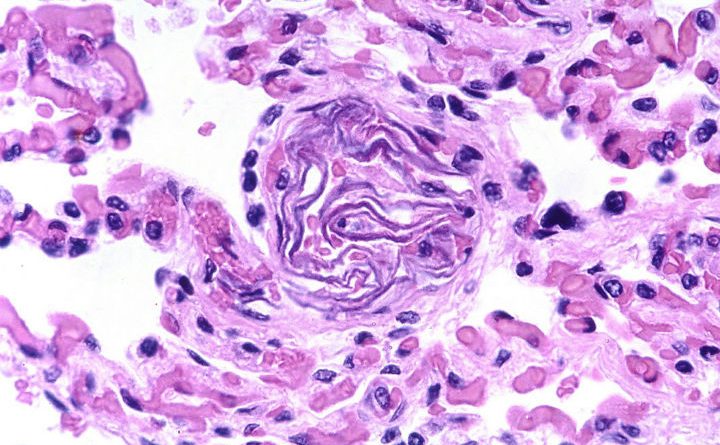When something breaks loose into the bloodstream and travels around, it’s called an embolus. When the embolus comes to a place too small for it to pass through, it creates a blockage called an embolism. The cells on the other side can no longer receive blood flow and begin to die from lack of oxygen.
While embolisms are often caused by a thrombus, or blood clot, that breaks loose, there are other particles that can result in a problem. Here is a look at the different types of embolisms.
Thromboembolisms
Once a thrombus breaks free, it becomes a thromboembolus. Deep vein thrombosis, in which a blood clot forms in the deeper veins—generally in the legs—is the most common cause of thrombus-related embolisms.
- Pulmonary Embolism: Sometimes the embolus will end up in the lungs. A pulmonary embolism results when the embolus blocks the main arteries going into the lungs. Symptoms of a pulmonary embolism may include coughing, difficulty breathing, or chest pain similar to that of a heart attack.
- Arterial Embolism: Arterial embolisms occur when the embolus becomes lodged in an artery, often in the extremities or less commonly in the organs. Signs of an arterial embolism can include coldness, pallor, a lack of pulse, twitching, numbness, tingling, weakness, or pain in the affected extremity. Eventually, the skin in the area may begin to blister, necrose, fall off, or develop gangrene. Affected organs may be painful or stop functioning well.
- Brain Embolism: An embolus may also travel all the way to the brain. The lack of oxygen can cause an ischemic stroke or transient ischemic attack (TIA), which may be evident by dizziness, unsteadiness, disorientation, blurry vision, speech issues, a headache, or weakness or loss of movement in one side of the body.
- Retinal Embolism: The blood vessels behind the eye are much smaller than other arteries, meaning emboli that might fit through most pathways in the body can get stuck in the arteries that lead to the retina. Blindness in the affected eye may occur.
Other Embolisms
Other types of particles besides blood clots may get enmeshed in vessels. These types of embolisms can be just as dangerous as those resulting from a moving thrombus.
- Air Embolism: Seen most often in scuba divers who don’t take the time to rise slowly to the surface of the water, an air embolism occurs when a bubble of air blocks the veins, instead of a blood clot. The air bubble may lodge in the heart, brain, or lungs, just like a blood clot. Symptoms of an air embolism may include respiratory or heart failure, seizures, confusion, a blue hue to the skin, pain, or a drop in blood pressure.
- Septic Embolism: Infection in the body can get into the bloodstream, allowing bacteria to come into contact with an embolus. Pus can develop in the veins. According to the National Institute of Health, “intro-vascular devices [like catheters] can also become sources of infection.” There may be no signs of a septic embolism, and it can be difficult to diagnose.
- Amniotic Fluid Embolism: During the birthing process, the amniotic fluid and cells from the uterus can get into the mother’s bloodstream, causing an immune system reaction that results in abnormal clotting. The exact cause is unknown. Amniotic embolisms may travel to the lungs, or cause other serious and life threatening symptoms for both mother and infant.
- Fat Embolism: Pieces of fat or bone marrow can also enter the bloodstream and cause an embolism. Surgeries and broken bones are common culprits of fat embolisms. Symptoms may be similar to those of other embolisms. Additionally, the skin may develop a blue tinge, called cyanosis.
- Cholesterol Embolism: Plaque, a collection of cholesterol and other detritus, can form in the veins, leading to a condition called atherosclerosis. The cholesterol in the plaque can come loose and travel in the veins until it becomes an embolism. Cyanosis is also common in this condition.
- Foreign Body Embolism: It is possible for other tiny bits of things to get into the bloodstream. When this happens, the foreign body can cause an embolism somewhere in the body.
Featured Image: Wikimedia








